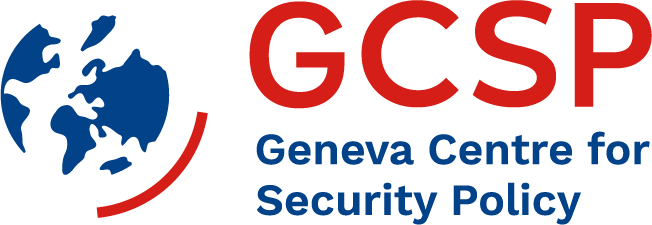P5 Experts’ Roundtable on Nuclear Risk Reduction – Co-Convenors’ Summary
The Normandy P5 Initiative on nuclear risk reduction launched by the Strategic Foresight Group and the Geneva Centre for Security Policy (together the Co-Convenors) is inspired by the Normandy Manifesto for World Peace. The Manifesto was issued by a group of Nobel Peace Laureates and social thinkers in June 2019. It drew attention to the existential risk faced by humanity of global nuclear war that might take place on account of intent, incident, or accident. In the follow up discussions it was decided to engage the five permanent members of the UN Security Council to find solutions to catastrophic risk through dialogue among strategic experts. Since 2022, three experts’ roundtables have taken place in Caen, Normandy and Geneva, Switzerland.
The following is a summary of the most recent roundtable held on 11-13 December 2023, in Geneva. This summary has been prepared by the Co-Convenors and represents their best effort to capture the key recommendations and is not a consensus document.
The Co-Convenors would like to thank the Future of Life Institute and the Silicon Valley Community Foundation for their support for this initiative.
Overall, the experts stressed that the issue of nuclear risk reduction remained crucial and urgent, particularly when linked to the risks posed by emerging technology. Dialogue amongst the nuclear five was an essential means of reducing tensions and minimising the risks of misunderstanding and miscalculation. Reducing nuclear risk was an important step in paving the way for negotiations to achieve everyone’s shared goal of eliminating nuclear weapons.
The experts made the following general observations:
- The official ‘P5 Process’ remains unique and must not be lost. It was established for the nuclear five to coordinate on issues relating to the Nuclear Non-Proliferation Treaty (NPT). Whilst recognising the difficult geopolitical context, this coordination function should be revived ahead of the next Review Conference to facilitate a more successful outcome.
- The experts welcomed the holding of five working level meetings on doctrines and risk reduction and other NPT related issues over the last 12 months but encouraged greater outreach on these discussions for the benefit of all NPT states parties and the nuclear expert community.
- For a comprehensive discussion on nuclear risk reduction, thought should be given to how to engage with the other nuclear weapon possessor states.
The experts discussed the following specific recommendations:
- The P5 could stress their shared responsibilities and mutual interests by building on the 3 January 2022 joint statement on Preventing Nuclear War, by looking at other areas for joint statements, such as upholding the Comprehensive Test Ban Treaty and the norm against nuclear testing, by inter alia each confirming that they would not be the first to start testing again.
- Space security in the context of the three pillars of the NPT should be added to the agenda of the official ‘P5 Process’ and the five should set out their threat perceptions to each other as well as explain their space policies and doctrines.
- The AI nuclear weapon nexus should be added to the agenda of the official ‘P5 Process’, initially at the working level.
- The workstream on doctrines and risk reduction could be expanded to include:
- each countries’ threat perceptions, covering nuclear risk, space security, and artificial intelligence;
- reaching a shared understanding on topics important to strategic stability, such as ballistic missile defence, hypersonic missiles, and delivery systems;
- transparency regarding activities at nuclear test sites; and
- dialogue on nuclear weapons and missiles sharing arrangements.
- There should be regular dialogue on non-proliferation issues in the Middle East and the Korean Peninsula.
- Welcoming the successful outcome of the two Groups of Governmental Experts on nuclear disarmament verification, they encouraged the N5 to continue their constructive engagement on this issue.
- Support to the next generation of nuclear experts should continue, through projects such as the Young Professionals Network.
The experts had a focused discussion on the nexus between artificial intelligence (AI) and nuclear command, control, and communications (NC3). They stressed that the nuclear five needed to strive for a shared understanding of the impact of AI on the nuclear domain and be sensitive to the risks it posed, such as over-confidence in its readings, manipulation of early warning systems, multiple AI systems working against each other and how to respond to unpredictable risk.
They discussed the following recommendations:
- A joint declaration that the human will always remain in the loop for NC3 would be a valuable public reassurance measure. Such a declaration could be endorsed by the UN Security Council.
- Support Track 2 or 1.5 initiatives that aim to bring together AI experts, computer scientists and the Big Tech sector with experts on nuclear weapons so that the implications of the increasing use of AI in NC3 can be better understood by all stakeholders.
- Explain to each other how the increase in use of AI will affect their nuclear doctrines in the future, discuss their understanding of AI terminology, and share best practice on any national safety reviews on the use of AI in NC3.
- Support a dedicated Thematic Session at the next NPT Review Conference on the AI nuclear nexus.
- Nationally, each of the nuclear five should determine their behavioural red lines for AI, for example through red teaming exercises to work out how they would respond in certain scenarios.

